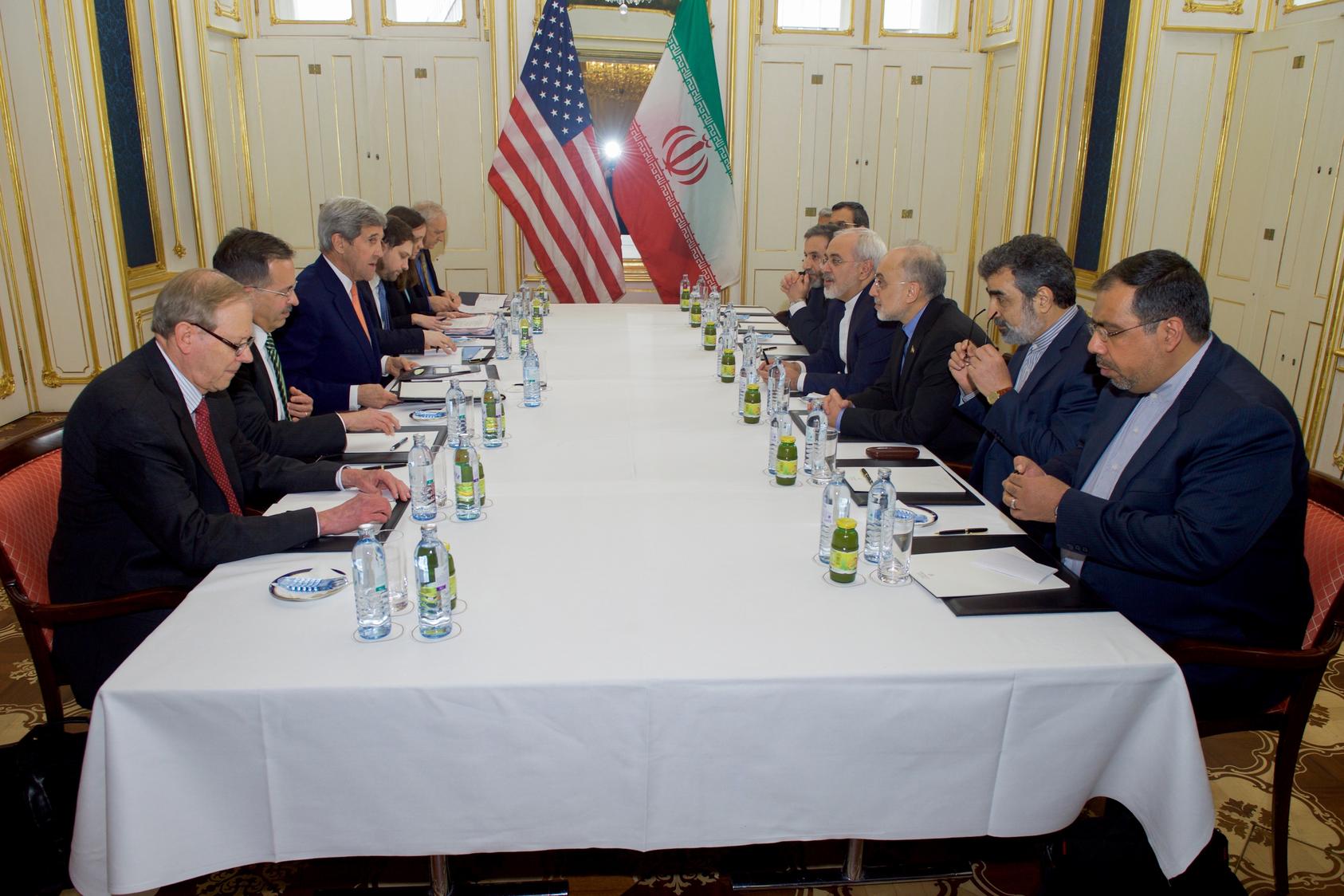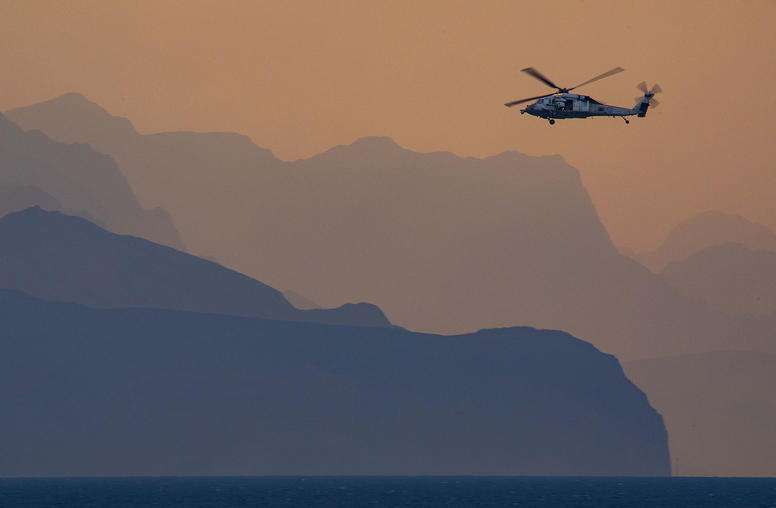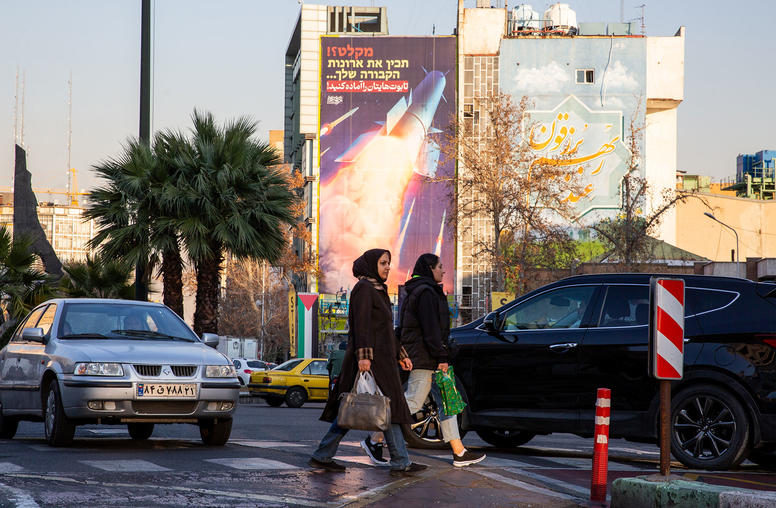Q&A: Iran Nuclear Accord Milestone
On the Issues With Daniel Brumberg
In a historic milestone of the nuclear agreement reached in July between Iran and the world’s major powers, the United Nations’ nuclear watchdog certified on January 16 that Iran had complied with restrictions on its nuclear program and the international community lifted a range of sanctions imposed on the regime over the past decades. Daniel Brumberg, a special advisor at the U.S. Institute of Peace, considers the ramifications for the region and the world.

The lifting of the sanctions on what was dubbed “Implementation Day” for the agreement, frees some $100 billion in frozen assets for Iran, and the Obama administration says about $50 billion of that is likely to revert back to Tehran’s benefit because the rest is tied up in previous obligations. The development has drawn praise for the prospects of improved relations between Iran and global powers and condemnation from those who fear Iran will use the money to support extremist and political violence.
The terms of the deal were the result of nearly two years of negotiations between Iran on the one hand, and the U.S., the European Union, Britain, China, France, Germany and Russia. The day also marked the release of five Americans who had been imprisoned in Iran, including Washington Post reporter Jason Rezaian. Four of the prisoners were released in exchange for the U.S. freeing six Iranian-Americans and one Iranian.
Do these events signal Iran’s return to the global diplomatic and economic arenas?
This is a historic moment, but its full implications are not clear. There is a lot of talk about an Iranian “windfall,” or the potential for a massive influx of foreign investment, a booming stock market and the like. Certainly there are Middle East states—Israel and Saudi Arabia in particular—who are very nervous that Iran’s global role will now be “normalized.” Coming on the heals of the successful use of diplomacy to resolve Iran’s seizing of two U.S. Navy vessels and 10 sailors last week, the implementation of the nuclear deal is seen in Jerusalem, Riyadh and other regional capitals as a harbinger of an inexorable process of U.S.-Iranian rapprochement.
Are these views justified?
In symbolic terms, the bid to address Iran’s nuclear program through diplomacy signaled a potential shift of the regional balance of power. But, until only a year or two ago, the working assumption in much of the region was that there was no basis for a deal that would actually remove the nuclear-related sanctions. And so when the prospects of a deal became real, there was a deep sense of shock and dismay – and in some cases near-panic.
So, this is more than mere symbolism?
Yes, but the practical or substantive implications of a nuclear deal depend on at least two things: first, on the evolution of Iran’s internal politics and its regional policies; and second, on the actions of Iran’s regional neighbors near and far.
Ok, so what are the ramifications for the region, especially states such as Israel and Saudi Arabia?
For these countries, the key challenge has been to devise responses that wouldn’t turn their fears into self-fulfilling prophecies. An over-reaction courted the possibility that the international community might view Iran in a more sympathetic light or see its regional rivals as engaging in dangerous adventurism. Israel’s leaders seemed—at the end of the day—much more aware of these risks and managed their approach to the nuclear deal accordingly.
Saudi Arabia went the opposite way. Its military operations in Yemen, and more recently, the execution in one day of 47 prisoners—including one of the most vocal Saudi Shi’ite critics of the monarchy—rang alarm bells in all Western capitals. The sense is growing that Saudi Arabia’s leaders are intent on provoking a wider sectarian-regional conflict. This perception represents an opportunity for Iran, and a real problem for Saudi leaders.
How do the Saudi actions represent an opportunity for Iran?
President Rouhani’s slogan is “A World without Violence” (WAVE). His allies help advocate for Iran’s return to the global diplomatic arena and a careful but sustained opening to international investment and trade, not only in the oil and gas sector. Iran could translate these aspirations into practical policies by, for one thing, showing flexibility at the Vienna talks on Syria, where the international community is trying to figure out an exit from this bloody civil war. They could seek international mediation of the Saudi-Iran conflict or the ongoing disastrous war in Yemen. Even a small step or gesture could enhance Iran’s diplomatic leverage.
How much room do Rouhani and Foreign Minister Javad Zarif have politically to pursue these forward-looking policies?
Hardliners, especially those attached to the Revolutionary Guards, oppose Rouhani’s efforts to open up Iran. They flexed their muscles when they seized the U.S. Navy vessels, but they didn’t oppose a diplomatic solution to that crisis because that might have jeopardized the removal of sanctions. Now that the nuclear deal has been officially implemented and with elections for the parliament and the “Council of Experts” (a body that will choose the successor to Supreme Leader Ayatollah Khamanei) coming in February, the stakes are significant. So the incentive for hardliners to act is considerable.
What does that mean for Iran’s advocates of an opening to the world?
They have to avoid actions that could intensify the already considerable backlash from their rivals, while convincing global actors that Iran is serious about advancing a new kind of diplomacy and about connecting Iran more closely to the global arena. Walking this tricky line could translate into a more hesitant regional approach from Rouhani and Zarif.
At the beginning you seemed to cast some doubt on the notion of a “windfall” for Iran in the lifting of sanctions. How will all of this affect Iran’s capacity to open up economically?
The Economist news magazine recently reported that Iran is “preparing for take off” financially. I’m not so sure. Apart from the capacity of hardliners to thwart an opening, there are deep structural obstacles to attracting foreign investment or using the funds freed up by the removal of sanctions. The approximately $50 billion that Iran might net is a fraction of what the country needs to revive its oil and gas industry, one of the least efficient in the world. In the next five years, Iran will require something like $300 billion dollars for those costs alone, so most of that must come from foreign investment.
As with so many Third World economies, Iran’s economy, even its so-called private sector, is regulated closely by the state and is held down by a mass of regulations, laws and informal practices that discourage foreign investment. Corruption is a huge problem: international monitoring organizations place Iran at 135 on a scale where the worst ranking is 175. Given all this, Rouhani might benefit from keeping domestic expectations in check.
Still, you read about international oil and gas companies lining up to go back to Iran. Surely, in the overall scheme of things, Iran is better off now than before, when the nuclear-related sanctions were in place?
Indeed. But even in the sector most likely to gain from ending sanctions—oil and gas—the opportunities are not what they once were. Iran can now sell more oil and is moving quickly to do so. But the massive global oil glut will put further downward pressure on prices, and that spells more problems for the Organization of the Petroleum Exporting Countries (OPEC). And this will surely further intensify Riyadh’s perception that Saudi Arabia is under diplomatic, military and economic siege.
If this results in intensified Iranian-Saudi conflict, this will be reflected in a further escalation of Shi’ite-Sunni tensions in Iraq, Syria and Lebanon, not to mention Bahrain. All of that will discourage the kind of foreign investment Iran needs to modernize its oil and gas sector. Despite all the talk in Iran of “diversifying,” that sector remains the foundation of the economy.
So all of this suggests Iran’s aspirations for an economic opening might depend on avoiding intensified regional conflict?
Yes. For economic reasons alone, Iran needs a diplomacy that can foster stability, reconciliation and real power-sharing in Iraq and Syria and, at the very least, some prospect of de-escalating the conflict with Persian Gulf States and Saudi Arabia in particular. That conflict touches nationalist sensibilities in Iran and thus it’s not easy for Rouhani to make the case for putting his “WAVE” concept to the test when it comes to the Saudis.
What is required is an intensified international effort to address regional and national-level conflicts. For this, the U.S., Russia and China must find common ground. Despite the dangerous common threats all three states face—first and foremost the extremist violence of the self-styled “Islamic State”—it is far from clear that they ready or capable of forging a common strategy.



